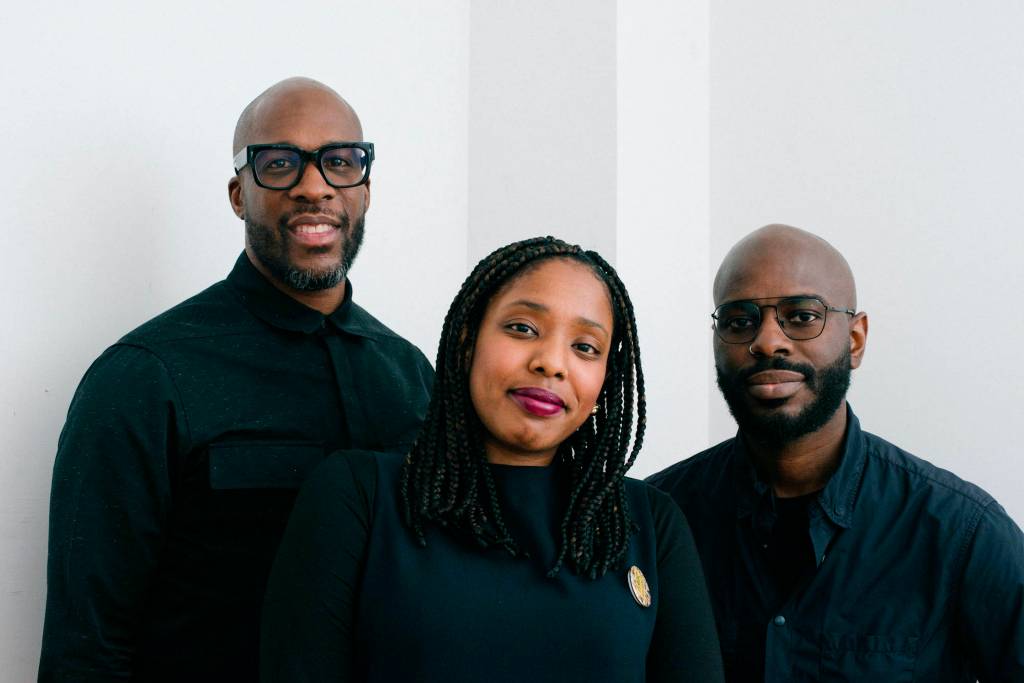When design strategist Nu Goteh, editor Alice Grandoit-Šutka and designer Marquise Stillwell co-founded Deem in the spring of 2020, they had a list of goals for their design publication. Chief among them was to establish a platform to explore design, in all its forms, as a social practice geared toward serving community needs. In large part, that meant prioritizing overlooked voices and taking a perspective that was inclusive, transdisciplinary and intergenerational—a mission that has been executed in each issue since, with subjects ranging from the design of housing cooperatives in Uruguay to the Black Reconstruction Collective’s view on the architecture of equity. It was also important that the journal existed not only online, but in a print iteration, in order to document the progress of people who have traditionally been marginalized in the design canon, particularly BIPOC contributors. “Part of the documenting that we thought was important was to be able to leave a physical artifact—something that can’t be erased online, something that can live on beyond that,” says Goteh, Deem’s creative director.
Beyond that, the group wanted to create a place for those ideas to circulate in person—a hope that was initially dashed by the pandemic. Now, two years later (and with four issues completed so far), Deem is finally taking its concepts in person with the debut of Designing for Dignity: A Convening of Possibilities, a symposium held at the Museum of Contemporary Art Chicago on March 4.
“We believe that design is a shared experience,” says Goteh. “That design isn’t just theory; design isn’t an object—design is an experience and it’s shared. We’re always trying to find ways to recontextualize what design is and how design can show up, and we definitely felt that having experiences would be core to our offerings.”
For Deem, the event will be a realization of the ideas that have populated its pages over the past several years. The name of the symposium comes directly from the first issue’s theme, “Designing for Dignity,” while the themes of the following three journals (“Pedagogy for a New World,” “Envisioning Equity” and “A Sense of Place”) also closely mirror the event’s programming, which includes discussions of place-making, equitable community design and online worlds, featuring key design practitioners such as architect Germane Barnes, designer and educator Ramon Tejada, and art director and designer Annika Hansteen-Izora.
Tying the event’s location into its programming was also key for the event’s organizers. After introductory remarks, the symposium will open with a talk from artist and trained architect Amanda Williams. A Chicago native and MacArthur Foundation Fellowship recipient, Williams applies color theory to explore racial inequity in urban spaces—for her most famous project, titled “Color(ed) Theory,” she painted the exterior of eight vacated and condemned homes in the city’s Englewood neighborhood in vibrant colors, drawing attention to underinvestment in Black communities.
While attendance for the symposium will be capped at 270 people, with tickets running $75 for regular attendees and $35 for students, locals with an interest in Deem’s subject matter have a chance to get involved at no cost, thanks to a pop-up Reference Room hosted within a public space at the MCA. Following a similar format as a pop-up public design library that the organization set up last year in Los Angeles, visitors can stop by the Chicago space from March 3-5 to browse the reference materials used in past issues of Deem along with resources relevant to the event programming.
“We reach out to the contributors to get their references—what are they currently reading, what has inspired them—and the references aren’t just limited to texts; it’s also videos or audio clips, music, video games,” says Goteh, who sees the library as an extension of the group’s focus on accessibility to all members of the design community. “So many things informed their process, and the reference room becomes this exhibit of process.”
The ideas the journal tackles are often complex and somewhat abstract—its most recent issue, for example, features social practice installation artist Theaster Gates on place-making—but the publication offers a smoother entry via conversations and interviews made digestible for a wide variety of readers.
“The opportunity to create impactful change with all the emerging issues we have, whether it’s climate change or misinformation and media literacy—those are opportunities that designers are suitable to be at the table for,” says Goteh. “Not just from the standpoint of creating the branding or the fixture, but because our practice is one of listening and translating pain points … There is an opportunity for us to pave the way for how we think and apply that to broader societal issues.”
Deem design journal co-founders (left to right) Marquise Stillwell, Alice Grandoit and Nu Goteh | Guarionex Rodriguez, Jr.





























